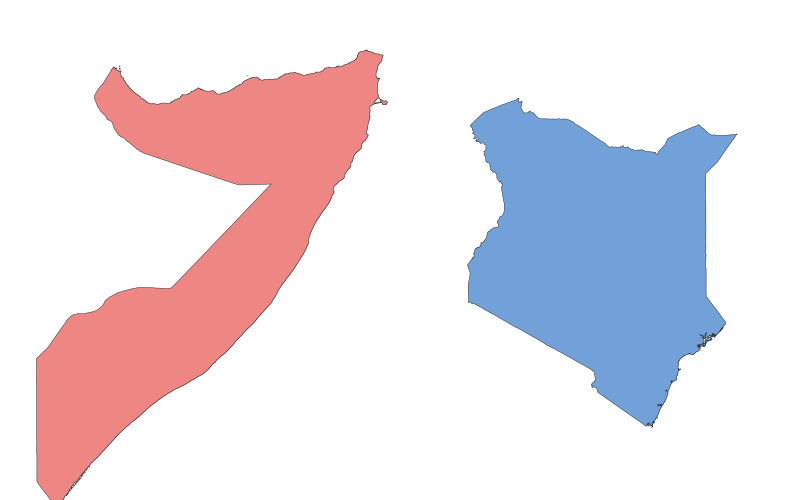Somalia vs. Kenya: A Geographical Comparison

Comparison Table
| Category | Somalia | Kenya |
|---|---|---|
| Location | Horn of Africa, bordering the Indian Ocean | East Africa, bordering the Indian Ocean |
| Size | 637,657 km² | 580,367 km² |
| Climate | Arid to semi-arid; hot year-round | Tropical; varies from arid to temperate |
| Natural Resources | Uranium, iron ore, tin, gypsum, bauxite | Limestone, soda ash, salt, gemstones |
| Urban Development | Mogadishu (capital), Hargeisa, Kismayo | Nairobi (capital), Mombasa, Kisumu |
| Transportation | Limited road network; major ports in Mogadishu and Berbera | Extensive road and rail network; major ports in Mombasa and Lamu |
Description
Somalia
Somalia, located in the Horn of Africa, is known for its long coastline along the Indian Ocean. The country has a rich history tied to trade routes dating back to antiquity, with influences from Arab, Persian, and African cultures. Somalia's economy is largely based on livestock, agriculture, and remittances from the diaspora. Despite its challenges, Somalia has a vibrant cultural heritage, including traditional music, poetry, and nomadic lifestyles. The country faces issues such as political instability and limited infrastructure, but its strategic location offers potential for future development.
Kenya
Kenya, situated in East Africa, is a regional hub for trade and tourism. Its diverse landscapes range from savannas to highlands and coastal regions. Kenya has a more stable economy, driven by agriculture (tea, coffee), tourism (wildlife safaris), and a growing services sector. Nairobi, the capital, is a major financial center in Africa. Kenya's culture is a blend of over 40 ethnic groups, with Swahili and English as official languages. The country boasts well-developed transportation networks and is a leader in renewable energy, particularly geothermal power. Kenya's political stability and economic growth make it a key player in the region.